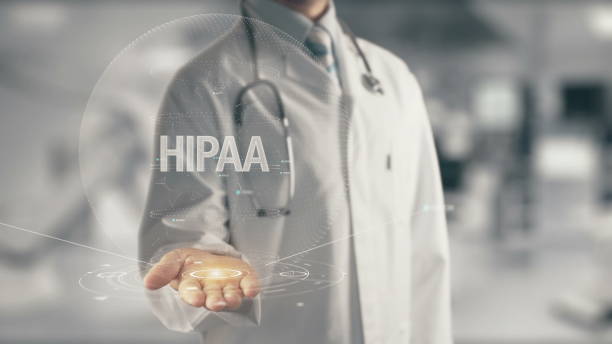Transforming Telehealth: The Rise of Remote Patient Monitoring
In an era where connectivity reshapes healthcare delivery, remote patient monitoring (RPM) emerges as a game-changing innovation. This cutting-edge technology allows healthcare providers to track patients' vital signs and health data from afar, revolutionizing chronic disease management and preventive care. As we delve into the world of RPM, we'll explore its potential to enhance patient outcomes, reduce healthcare costs, and pave the way for a more connected and efficient healthcare system.

In recent years, the integration of artificial intelligence and machine learning algorithms has further enhanced RPM capabilities. These advanced systems can now analyze large volumes of patient data in real-time, identifying trends and potential health risks before they become critical. This proactive approach to healthcare has the potential to significantly reduce hospital readmissions and improve overall patient outcomes.
The Technology Behind Remote Patient Monitoring
At the heart of RPM are internet-connected devices that collect and transmit patient data. These can range from wearable fitness trackers and smartwatches to more specialized medical devices like continuous glucose monitors or smart pill dispensers. These devices use various communication protocols, including Bluetooth, Wi-Fi, and cellular networks, to send data securely to healthcare providers.
The data is then processed and analyzed using sophisticated software platforms. These platforms often incorporate artificial intelligence algorithms that can detect anomalies and predict potential health issues based on historical data and established medical knowledge. Healthcare providers can access this information through secure web portals or mobile applications, allowing them to monitor patients’ health status in real-time and make informed decisions about their care.
Improving Chronic Disease Management
One of the most significant impacts of RPM is in the management of chronic diseases. Conditions like diabetes, hypertension, and heart disease require constant monitoring and adjustment of treatment plans. Traditional methods often rely on infrequent check-ups, which can lead to delayed interventions and poor disease control.
RPM changes this paradigm by providing continuous data on patients’ health status. For example, diabetic patients can use continuous glucose monitors that transmit blood sugar levels to their healthcare providers in real-time. This allows for immediate adjustments to insulin dosages or dietary recommendations, leading to better glycemic control and reduced risk of complications.
Similarly, patients with heart conditions can use wearable ECG monitors that detect arrhythmias or other cardiac abnormalities. This early detection can prevent serious events like heart attacks or strokes, potentially saving lives and reducing the burden on emergency healthcare services.
Enhancing Patient Engagement and Self-Management
Remote patient monitoring not only benefits healthcare providers but also empowers patients to take a more active role in managing their health. By providing patients with real-time data about their health status, RPM encourages greater engagement and self-awareness.
Many RPM systems include patient-facing apps or portals that allow individuals to track their health data, set goals, and receive personalized health tips. This continuous feedback loop can motivate patients to make positive lifestyle changes, adhere to medication regimens, and actively participate in their treatment plans.
Moreover, RPM can help alleviate anxiety for patients with chronic conditions. The knowledge that their health is being continuously monitored can provide peace of mind and reduce the need for frequent in-person check-ups, particularly beneficial for those with mobility issues or living in remote areas.
Challenges and Future Directions
While the potential of remote patient monitoring is immense, several challenges need to be addressed for widespread adoption. Data security and privacy concerns are paramount, as RPM systems deal with sensitive health information. Robust encryption and secure data transmission protocols are essential to protect patient confidentiality and comply with healthcare regulations.
Interoperability is another significant challenge. With a multitude of devices and platforms in the market, ensuring seamless data exchange between different systems is crucial for the effectiveness of RPM. Efforts are underway to develop standardized protocols and APIs to facilitate interoperability across various healthcare technologies.
The digital divide also poses a challenge to equitable access to RPM technologies. Not all patients have access to reliable internet connections or smart devices, which could exacerbate healthcare disparities. Addressing this issue will require collaborative efforts from healthcare providers, technology companies, and policymakers to ensure that RPM benefits reach all segments of the population.
Looking ahead, the future of RPM is promising. Advancements in sensor technology, coupled with the rollout of faster and more reliable wireless networks, will enable even more sophisticated monitoring capabilities. We can expect to see the development of implantable sensors that can monitor internal body functions with unprecedented precision, providing early warnings for conditions like cancer or organ failure.
Conclusion
Remote patient monitoring represents a significant leap forward in healthcare delivery, offering the potential to improve patient outcomes, reduce healthcare costs, and enhance the overall quality of care. As technology continues to evolve and healthcare systems adapt to new models of care, RPM will undoubtedly play a crucial role in shaping the future of medicine. By embracing this technology and addressing its challenges, we can move towards a more connected, efficient, and patient-centered healthcare system that truly leverages the power of modern telecommunications.





